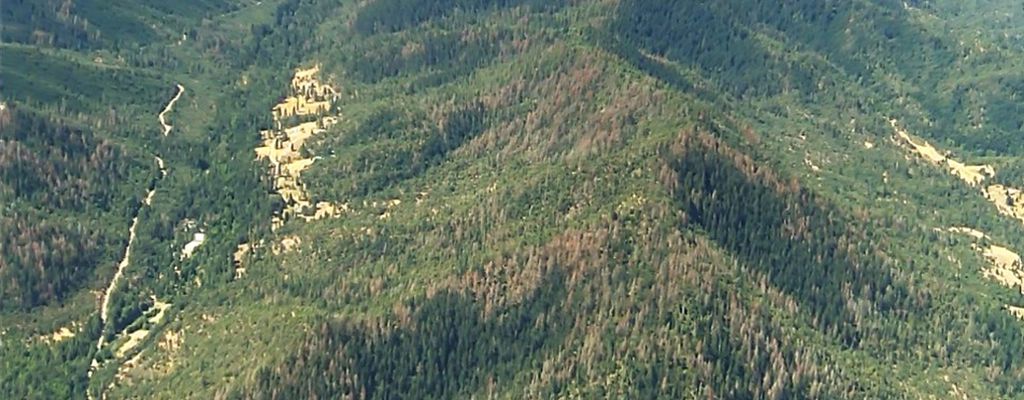Researchers: Max Bennett, Dave Shaw
Study Objective: Develop a risk score to predict the likelihood and intensity of Douglas-fir mortality at the stand scale in the Klamath Mountains ecoregion
Summary: Recent increases in Douglas-fir (Psuedotsuga menziesii var. menziesii) mortality in the Klamath Mountains ecoregion raise concerns about the long-term resilience of Douglas-fir in the ecoregion and increased potential for uncharacteristic wildfire. We used data from the USDA Forest Service Aerial Detection Survey and ninety-six field plots to explore the relationships between physiographic and climate variables and Douglas-fir mortality. Our results provide strong evidence for a decline spiral in which Douglas-fir growing on hot, dry sites (predisposing factor) are further stressed by drought (inciting factor) and are then exploited by the flatheaded fir borer (Phaenops drummondi) and other secondary biotic agents (contributing factors), resulting in decline and mortality. At the landscape scale, Douglas-fir mortality increased as average annual precipitation declined and average climatic water deficit increased.
Publication:
- Max Bennett, David C Shaw, Laura Lowrey. 2023. Recent Douglas-fir Mortality in the Klamath Mountains Ecoregion of Oregon: Evidence for a Decline Spiral, Journal of Forestry: fvad007, https://doi.org/10.1093/jofore/fvad007
Related Publications & Other Resources:
- Douglas-fir in Klamath Mountains are in ‘decline spiral,’ Oregon State research shows, OSU Press Release, March 20, 2023
